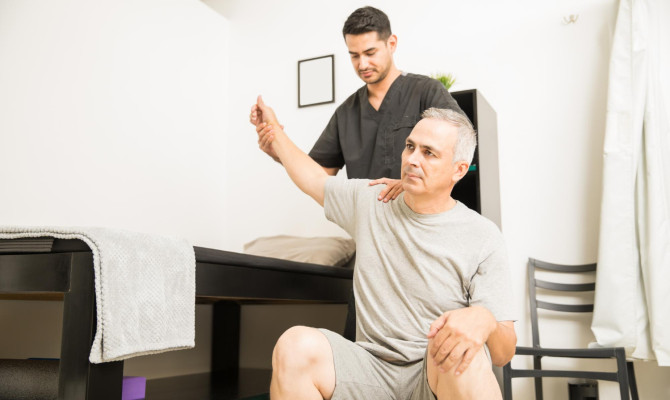Lyme disease : Causes, Symptoms, and Treatment

- Lyme Disease
- 16 Aug 2023
Overview
What is Lyme disease?
Lyme disease is a contagious bacterial disease caused by Borrelia burgdorferi. The infected black-legged deer tick passes the bacteria to humans by biting. The tick gets infected after feeding infected deer, mice, or birds.
For a human to get the infection, the tick must remain on the skin for around 36 to 48 hours. Tick removal within 48 hours prevents the disease from occurring in humans.

Facts about Lyme disease
- Lyme disease is also called Lyme borreliosis.
- Lyme disease is more prevalent during the tick season, from April to October each year.
- It is most widespread in the Northeastern and Midwest parts of the United States.
- There are approximately 300,000 (0.3 million) cases of Lyme disease yearly in the United States 1Overview| Researched based study from Sciencedirect.com,2Overview| Researched based study from Cdc.gov .
Symptoms
Symptoms of Lyme disease
Common symptoms of Lyme disease are
- Circular rashes on the skin that looks like a bull’s eye
- Headache
- Fever
- Extreme tiredness
- Muscle pain
- Joint swelling and pain
- Difficulty in sleeping
- Difficulty in concentration
- Swollen lymph nodes (glands for the body’s immune response) 3Symptoms| Researched based study from Sciencedirect.com
Common symptoms of Lyme disease in children
- Fever
- Extreme tiredness
- Headache
- Joint pain
- Muscle pain
- Cough
- Sore throat
- Runny nose
- Depression
- Anxiety
- Mood changes
The symptoms might occur immediately after the infection and sometimes after months or years 4Symptoms| Researched based study from Nlm.nih.gov
Symptoms of the post-Lyme disease syndrome
When Lyme disease patients are treated with antibiotics but continue to experience symptoms, it is called post-Lyme disease syndrome.
Symptoms
- Extreme tiredness
- Muscles pain
- Joints pain
- Sleeping difficulty
- Difficulty in speaking
- Pain and swelling in shoulders, elbows, and knees
- Difficulty in concentration
- Short term Memory problems 5Symptoms| Researched based study from Nlm.nih.gov
Unusual symptoms of Lyme disease
- Sharp Pains
- Weakness
- Visual problem
- Sensitivity to light
- Hearing loss
- Stiff neck
- Facial palsy(drooping facial parts)
- Loss of sensation in arms and legs
- Permanent joint damage
Causes
Causes of Lyme disease
Borrelia burgdorferi bacteria cause Lyme disease. The bacteria are passed into humans through infected deer tick bites.6Causes| Researched based study from Sciencedirect.com The ticks prefer to live in low grasslands and woody areas.
The tick carrying the infection may be of two types
- Western black-legged tick (causing illness in Pacific coastal United States) and
- The black-legged deer tick (causing infection in mid-Atlantic, northeastern, and North-central United States)
Stages
Stages of Lyme’s disease
Lyme disease can occur in 3 stages. They are as follows:
Stage1-Early localized stage
Generally, the rash occurs in the infected tick bite site. The rash typically resolves in most people.
Symptoms of early localized stage
- Fever
- Headache
- Chill
- Sore throat
- Swollen lymph nodes
- Vision problem
- Muscle pain
- Tiredness
Stage 2-Early disseminated stage
- It occurs after months of the tick bite. The rash may be seen in areas other than the tick bite area.
- In this stage, the infection may spread to other parts of the body
Symptoms of Early disseminated stage are
- Irregular heartbeat
- Loss of sensation in body parts
- Facial droop
- Weakness to paralysis on one side of the face
- Multiple lesions
- Meningitis (infection of the membrane surrounding the spinal cord and brain)
Stage 3-Late disseminated stage
- It occurs when the Lyme disease is not treated in the first or second stage.
- The late disseminated stage occurs after months or several years of the tick bite.
Symptoms of Late disseminated stage
- Joints pain and swelling (arthritis)
- Short-term memory loss
- Difficulty in concentrating
- Difficulty in sleeping
- Difficulty in speaking
- Loss of sensation in arms, hands, legs, and feet 14Stages| Researched based study from Nlm.nih.gov
Diagnosis
Diagnosis of Lyme disease
- A physician will carry out a physical examination to check for skin rash or any other symptoms of Lyme disease. He will also inquire about the earlier medical condition and tick bite reports, including his residence’s location.
The doctor might order the following tests:
ELISA (Enzyme linked immunosorbant assay)
- ELISA tests detect the antibodies for B. burgdorferi bacteria
Western blot
- It confirms the ELISA test.
- It checks for antibodies specific to the B. burgdorferi bacterial protein
PCR (Polymerase chain reaction)
- It screens people with nervous system symptoms and Lyme arthritis
- It is performed on the cerebrospinal fluids or joint fluids 7Diagnosis| Researched based study from Sciencedirect.com
Risk factors
Risk factors of Lyme disease
The risk of getting Lyme’s disease depends on the following factors
Time of the year
- The tick infection is more common in spring, summer, and autumn
Habitat
- Ticks reside in the grassy and woody areas
Region
- Deer ticks carrying the infection are mostly found in the Atlantic and Southeastern Canada 8Risk factors| Researched based study from Sciencedirect.com
Who are at risk?
- Boys under 15 years
- Men between the age of 40 to 60 year
Being more prone to Lyme infection in these groups might be due to staying more hours outdoors.
Complications
Complications of Lyme disease
Complications of untreated Lyme disease are as follows:
- Arthritis that does not improve
- Frequent tiredness
- Body pain
- Memory problem
Other complications includes
- Joint inflammation with excess fluid deposition
- Meningitis( inflammation of protective membranes of the brain and spinal cord)
- Encephalitis (brain inflammation)
- Mental difficulties
Severe complication
Lyme carditis
Lyme carditis occurs when Lyme bacteria invade the heart. It causes the following symptoms:
- Rapid heartbeat
- Difficult breathing
- Chest pain and
- Fainting 9Complications| Researched based study from Nlm.nih.gov
Treatment
Treatment of Lyme disease
Treatment of early Lyme disease is a two-week course of antibiotics to eliminate the infection.
Antibiotic medications
- Doxycycline
- Cefuroxime
People with Lyme arthritis are treated with oral antibiotics for four weeks 10Treatment| Researched based study from Nlm.nih.gov ,11Treatment| Researched based study from Nlm.nih.gov .
Intravenous antibiotics (antibiotics through the veins)
- It is used for the treatment of Lyme disease invading the heart or central nervous system
- After improvement, the doctors prescribe oral antibiotics. The complete course of treatment is 2 to 4 weeks
Is Lyme disease completely curable?
- Almost most cases are curable with antibiotics, but in some cases, patients may develop symptoms like tiredness, pain, and thinking difficulty even after they finish the treatment, and the disease is known as Post- Lyme disease syndrome.
Prevention
Prevention of Lyme disease
- Wearing full body covered clothes when outside
- Clearing the wooden areas and keeping the woodpiles where there is abundant sunlight
- Using insect repellents such as lemon eucalyptus or DEET (N, N-diethyl meta toluamide)in the skin and clothing for the time one is outside
- Taking a bath after coming from outside and checking for ticks
- Drying the clothes in places where there is abundant sunlight
- Giving anti-tick treatment to pets.
- Being alert and checking oneself, children, and pets for ticks
- Removing ticks with the tweezer whenever visible
- Keeping oneself alert of the Lyme disease symptoms 12Prevention| Researched based study from Nlm.nih.gov
Tips to spot ticks and their removal
After coming from outdoors, one should take a shower and then must look for ticks in the following places:
- One’s clothing
- Under the arms and behind the knees
- In and around the ears
- In all areas of hair by running the hands
- Between the legs and around the waist
Tips for Tick Removal
- One must use a tweezer to grab the tick
- Pull upward carefully without twisting the tweezers
- After removal, one must clean the bite area with soap and water
- Avoid crushing the tick
- Always dispose of the tick by flushing it in the toilet, a sealed bag, or trash 13Prevention| Researched based study from Cdc.gov
Takeaway
Key takeaways
- Lyme disease occurs from the deer tick bite that carries the B. burgdorferi bacteria.
- A person with Lyme disease might develop a bull’s eye rash that is treatable with antibiotics.
- One with Lyme disease symptoms must immediately contact a physician to get the correct treatment and prevent future complications.
Any feedback on this article?
 This Articles content was accurate
This Articles content was accurate Very Informative Article
Very Informative Article I have a question or a comment
I have a question or a comment
 This article contains inaccurate content
This article contains inaccurate content This article was not helpful
This article was not helpful I have a question or a comment
I have a question or a comment
We appreciate your helpful feedback!
Checkout our social pages
References
-
Science Direct
Lyme Disease | Overview
-
Centers for Disease Control and Prevention
Transmission | Overview
-
Science Direct
Lyme Borreliosis | Symptoms
-
National Library of Medicine
Parenting When Children Have Lyme Disease: Fear, Frustration, Advocacy | Symptoms
-
National Library of Medicine
Post-Lyme disease syndrome | Symptoms
-
Science Direct
Lyme Disease | Causes
-
Science Direct
Diagnosis and Treatment of Lyme Disease | Diagnosis
-
Science Direct
Risk factors for Lyme disease: A scale-dependent effect of host species diversity and a consistent negative effect of host phylogenetic diversity | Risk factors
-
National Library of Medicine
Complications of Lyme borreliosis | Complications
-
National Library of Medicine
Diagnosis and management of patients with Lyme disease | Treatment
-
National Library of Medicine
Diagnosis and Treatment of Lyme Arthritis | Treatment
-
National Library of Medicine
Interventions to prevent Lyme disease in humans: A systematic review | Prevention
-
Centers for Disease Control and Prevention
Tick removal | Prevention
-
National Library of Medicine
Lyme disease | Stages




































